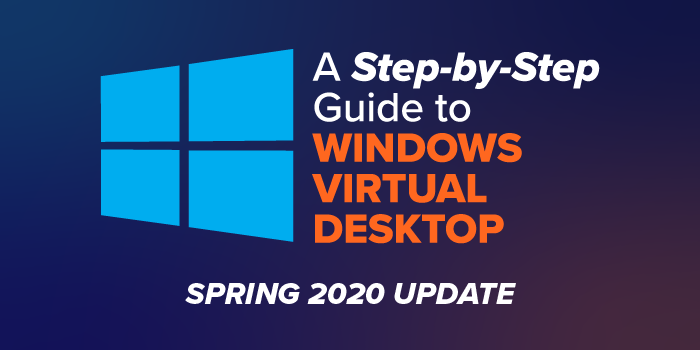ⓘ Important
This content applies to the Windows Virtual Desktop Spring 2020 update public preview with Azure Resource Manager objects.
Click here for guides using Windows Virtual Desktop Fall 2019 release without Azure Resource Manager objects.
In May, the Spring 2020 Update for Windows Virtual Desktop entered public preview. While WVD, like all Azure services, enjoy continuous updates, periodically we get major updates like this bundled into a large release, and they are named based on the season of the release.
The most significant change this update brings is WVD is now an Azure Resource Manager service. There are several key benefits that this change brings.
Azure Portal Integration
In the Fall 2019 release of WVD, there was no integration with the Azure Portal. Most of the configuration and management was done using PowerShell or a management web application that was separate from the Azure portal. Now that WVD objects are ARM resources, they can be created and managed using the Azure portal.
Azure AD Groups
Before the Spring Update, users were granted access to WVD app groups and desktops individually. Being able to publish RemoteApps and full desktops to Azure AD Groups is a much-needed improvement and saves a considerable amount of time.
Monitoring
Monitoring is now done through the Azure Portal as well. Monitoring in the Fall 2019 release was done using PowerShell or a diagnostic web application which, like the management web app, was separate from the Azure Portal. WVD ARM objects are now connected to a Log Analytics Workspace, allowing the use of Kusto queries and PowerBI.
PowerShell Support
The Fall 2019 release was managed using Windows PowerShell. The cmdlets used to work with WVD were part of an RDS module named Microsoft.RDInfra.RDPowerShell. WVD cmdlets are now part of the AZ module, which can be loaded in the cross-platform PowerShell.
Metadata Storage Location
Previously, with the Fall 2019 release, all WVD service metadata was stored in US regions. This was a problem for organizations that had regulations regarding storing data outside their sovereignty. There is now a choice for where to store the metadata when creating the host pool. New locations include European geographies, and more are being added.
What’s Next
In this series of articles, I will walk you through deploying and configuring Windows Virtual Desktop Spring 2020 Update, including the following tasks:
- Creating a host pool with the Azure portal
- Manage app groups
- Enable Azure multi-factor authentication
- Configure FSLogix profile containers and Azure files
- Configure host pool settings
- Connect to Windows Virtual Desktop
- Customize a session host image
Make sure to check out more great articles at ITProTV

Comments are closed